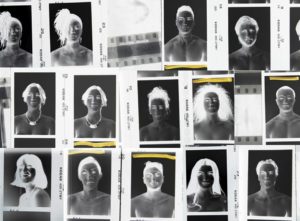Wiċċna, by Zvezdan Reljić
 WIĊĊNA (translated from Maltese: OUR FACE) will be a book of around 200 photographic portraits of individuals from different backgrounds, generations and ethnicities, who currently reside in Malta, many accompanied by a short caption taken from the individual’s answer to the often complicated question “Where are you from?”
WIĊĊNA (translated from Maltese: OUR FACE) will be a book of around 200 photographic portraits of individuals from different backgrounds, generations and ethnicities, who currently reside in Malta, many accompanied by a short caption taken from the individual’s answer to the often complicated question “Where are you from?”
The book will feature aesthetical, anthropological and literary essays on aspects of physiognomy, identity and photography, each written in a different language that has influenced Malta throughout its history: Arabic (Walid Nabhan), English (Alexandra Pace), French (Philippe Parizot), Italian (Virginia Monteforte), Maltese (Leanne Ellul), and Spanish (Antoine Cassar).
Portraits reproduced in a book are going to be handprinted lith prints, and every person photographed will receive original print as a present.
This project is supported by #artscouncilmalta
Participation to this project with the translation into English of the text in French written by Philippe Parizot:
A cartography of surfaces, of worlds to come, emerges through the play of shadows, landscape morphology, fault lines and the play of tonalities. Like language or geographical outcrops shaped by erosion, the soft matter of the face constantly reinvents itself, layer after layer: this is what these images seem to tell.
Two desires had to meet to make these figures dance, to make them ours. Firstly, the desire of Malta, the island of women/men-frontiers, of fossils and caves for the two hundred passengers who came to fill their gap in the Maltese melting pot over the course of a deviation, of a step aside, of a journey. Secondly, the desire of the photographer who gave birth to this project from an absent column, aggregating around him, like the god Glaucus, a living swarm of seashells, algae and pebbles united in the infinite circle of his emotional kaleidoscope.
——–
À travers le jeu des ombres, la morphologie des reliefs, les lignes de faille, les jeux de tonalités, surgit toute une cartographie des surfaces, de mondes à venir. À l’image de la langue ou des affleurements géologiques travaillés par l’érosion, la matière tendre du visage se réinvente sans cesse, couche après couche : voilà ce que semblent dire ces images.
Pour faire danser ces figures, les rendre nôtres, il fallait la rencontre de deux désirs. Désir de Malte d’abord, l’île des hommes-frontières, des fossiles et des grottes, pour les deux cents passagers venus combler leur manque dans le creuset maltais le temps d’un écart, d’un pas de côté, d’un voyage. Désir du photographe, ensuite, qui a fait naître ce projet à partir d’une colonne absente, en agrégeant autour de lui, tel le dieu Glaucos, une nuée vivante de coquillages, d’algues et de cailloux réunis dans la ronde infinie de son kaléidoscope affectif.